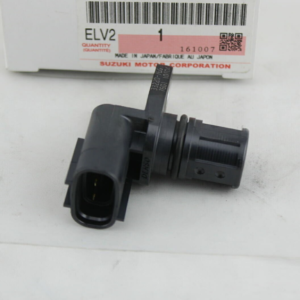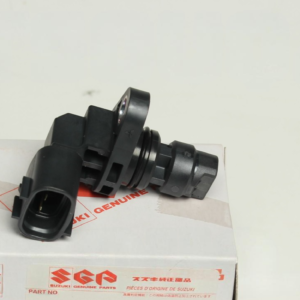**Unveiling Precision: The Essential Role of Mass Airflow Sensors in Automotive Performance**
In the intricate symphony of automotive engineering, where precision meets power, one often-overlooked component silently dictates the air-fuel mixture—the mass airflow sensor (MAF sensor). While engines roar with vigor, it’s the MAF sensor that measures the mass of air entering the engine, ensuring optimal fuel delivery and engine performance. Join us as we delve into the significance, functionality, and importance of mass airflow sensors in the realm of automotive technology.
**Understanding the Essence: What is a Mass Airflow Sensor?**
A mass airflow sensor (MAF sensor) is a critical component of a vehicle’s electronic fuel injection system. Its primary function is to measure the mass of air entering the engine and provide this information to the engine control unit (ECU). Based on this data, the ECU adjusts the air-fuel mixture to optimize combustion and engine performance.
**The Evolution of Fuel Injection Systems**
In the early days of automotive engineering, carburetors were the primary means of fuel delivery, relying on mechanical mechanisms to regulate the air-fuel mixture. However, as engines became more sophisticated and emissions regulations tightened, the need for more precise fuel injection systems grew. Mass airflow sensors emerged as a transformative technology, enabling accurate measurement and control of air intake for optimal combustion efficiency.
**The Significance of Air-Fuel Ratio**
In the dynamic realm of modern driving, where engines operate under varying conditions, maintaining the correct air-fuel ratio is crucial for optimal performance, fuel efficiency, and emissions control. Mass airflow sensors play a pivotal role in this regard, providing real-time feedback to the ECU, which adjusts fuel delivery to ensure the ideal air-fuel mixture for combustion.
**The Silent Observer: How Does a Mass Airflow Sensor Work?**
Despite its unassuming appearance, the mass airflow sensor employs sophisticated technology to fulfill its role effectively. Most mass airflow sensors utilize a heated wire or film element that is cooled by the incoming air flow. As more air enters the engine, the cooling effect on the sensor element increases, causing changes in electrical resistance.
The sensor measures these changes in resistance and converts them into voltage signals, which are sent to the ECU. Based on the voltage signals from the mass airflow sensor, the ECU calculates the mass of air entering the engine and adjusts the fuel delivery accordingly to maintain the desired air-fuel ratio.
**The Unseen Benefits: Advantages of Mass Airflow Sensors**
While mass airflow sensors may operate quietly behind the scenes, their impact on engine performance and efficiency is undeniable. Here are some key advantages:
1. **Optimized Combustion:** Mass airflow sensors enable precise control of the air-fuel mixture, resulting in more efficient combustion and improved engine performance.
2. **Enhanced Fuel Efficiency:** By maintaining the correct air-fuel ratio, mass airflow sensors help optimize fuel consumption and reduce emissions, contributing to better fuel efficiency.
3. **Improved Driveability:** Proper air-fuel mixture control facilitated by mass airflow sensors results in smoother acceleration, responsive throttle response, and overall improved driving experience.
4. **Reduced Emissions:** By ensuring efficient combustion, mass airflow sensors help reduce harmful emissions, contributing to cleaner air and environmental sustainability.
**Looking Ahead: Innovations in Sensor Technology**
As automotive technology continues to advance, so too will the field of sensor technology. Innovations in mass airflow sensor design, materials, and integration with engine management systems may lead to even more precise and efficient air intake monitoring solutions in the future. Furthermore, as vehicles transition towards electrification and alternative powertrains, mass airflow sensors will continue to play a crucial role in optimizing engine performance and efficiency.
**In Conclusion: The Architect of Engine Performance**
In the dynamic world of automotive engineering, where every molecule matters, mass airflow sensors emerge as silent but indispensable architects of engine performance. Their unassuming presence belies their critical importance in ensuring optimal combustion, fuel efficiency, and emissions control. So, the next time you feel the seamless power and responsiveness of your vehicle, remember to thank the unsung hero working diligently behind the scenes—the mass airflow sensor.
In stock (can be backordered)
$37,904.62
**Unveiling Precision: The Essential Role of Mass Airflow Sensors in Automotive Performance**
In the intricate symphony of automotive engineering, where precision meets power, one often-overlooked component silently dictates the air-fuel mixture—the mass airflow sensor (MAF sensor). While engines roar with vigor, it’s the MAF sensor that measures the mass of air entering the engine, ensuring optimal fuel delivery and engine performance. Join us as we delve into the significance, functionality, and importance of mass airflow sensors in the realm of automotive technology.
**Understanding the Essence: What is a Mass Airflow Sensor?**
A mass airflow sensor (MAF sensor) is a critical component of a vehicle’s electronic fuel injection system. Its primary function is to measure the mass of air entering the engine and provide this information to the engine control unit (ECU). Based on this data, the ECU adjusts the air-fuel mixture to optimize combustion and engine performance.
**The Evolution of Fuel Injection Systems**
In the early days of automotive engineering, carburetors were the primary means of fuel delivery, relying on mechanical mechanisms to regulate the air-fuel mixture. However, as engines became more sophisticated and emissions regulations tightened, the need for more precise fuel injection systems grew. Mass airflow sensors emerged as a transformative technology, enabling accurate measurement and control of air intake for optimal combustion efficiency.
**The Significance of Air-Fuel Ratio**
In the dynamic realm of modern driving, where engines operate under varying conditions, maintaining the correct air-fuel ratio is crucial for optimal performance, fuel efficiency, and emissions control. Mass airflow sensors play a pivotal role in this regard, providing real-time feedback to the ECU, which adjusts fuel delivery to ensure the ideal air-fuel mixture for combustion.
**The Silent Observer: How Does a Mass Airflow Sensor Work?**
Despite its unassuming appearance, the mass airflow sensor employs sophisticated technology to fulfill its role effectively. Most mass airflow sensors utilize a heated wire or film element that is cooled by the incoming air flow. As more air enters the engine, the cooling effect on the sensor element increases, causing changes in electrical resistance.
The sensor measures these changes in resistance and converts them into voltage signals, which are sent to the ECU. Based on the voltage signals from the mass airflow sensor, the ECU calculates the mass of air entering the engine and adjusts the fuel delivery accordingly to maintain the desired air-fuel ratio.
**The Unseen Benefits: Advantages of Mass Airflow Sensors**
While mass airflow sensors may operate quietly behind the scenes, their impact on engine performance and efficiency is undeniable. Here are some key advantages:
1. **Optimized Combustion:** Mass airflow sensors enable precise control of the air-fuel mixture, resulting in more efficient combustion and improved engine performance.
2. **Enhanced Fuel Efficiency:** By maintaining the correct air-fuel ratio, mass airflow sensors help optimize fuel consumption and reduce emissions, contributing to better fuel efficiency.
3. **Improved Driveability:** Proper air-fuel mixture control facilitated by mass airflow sensors results in smoother acceleration, responsive throttle response, and overall improved driving experience.
4. **Reduced Emissions:** By ensuring efficient combustion, mass airflow sensors help reduce harmful emissions, contributing to cleaner air and environmental sustainability.
**Looking Ahead: Innovations in Sensor Technology**
As automotive technology continues to advance, so too will the field of sensor technology. Innovations in mass airflow sensor design, materials, and integration with engine management systems may lead to even more precise and efficient air intake monitoring solutions in the future. Furthermore, as vehicles transition towards electrification and alternative powertrains, mass airflow sensors will continue to play a crucial role in optimizing engine performance and efficiency.
**In Conclusion: The Architect of Engine Performance**
In the dynamic world of automotive engineering, where every molecule matters, mass airflow sensors emerge as silent but indispensable architects of engine performance. Their unassuming presence belies their critical importance in ensuring optimal combustion, fuel efficiency, and emissions control. So, the next time you feel the seamless power and responsiveness of your vehicle, remember to thank the unsung hero working diligently behind the scenes—the mass airflow sensor.
| Weight | 0.07 kg |
|---|---|
| Warehouse | Inventory at warehouse 2 |



Get E-mail updates about our latest products and special offers.
Sensors and More is Jamaica’s ultimate online auto parts store. Established in 2020, we specialize in genuine electrical parts for Japanese, Read more…
Reviews
There are no reviews yet.